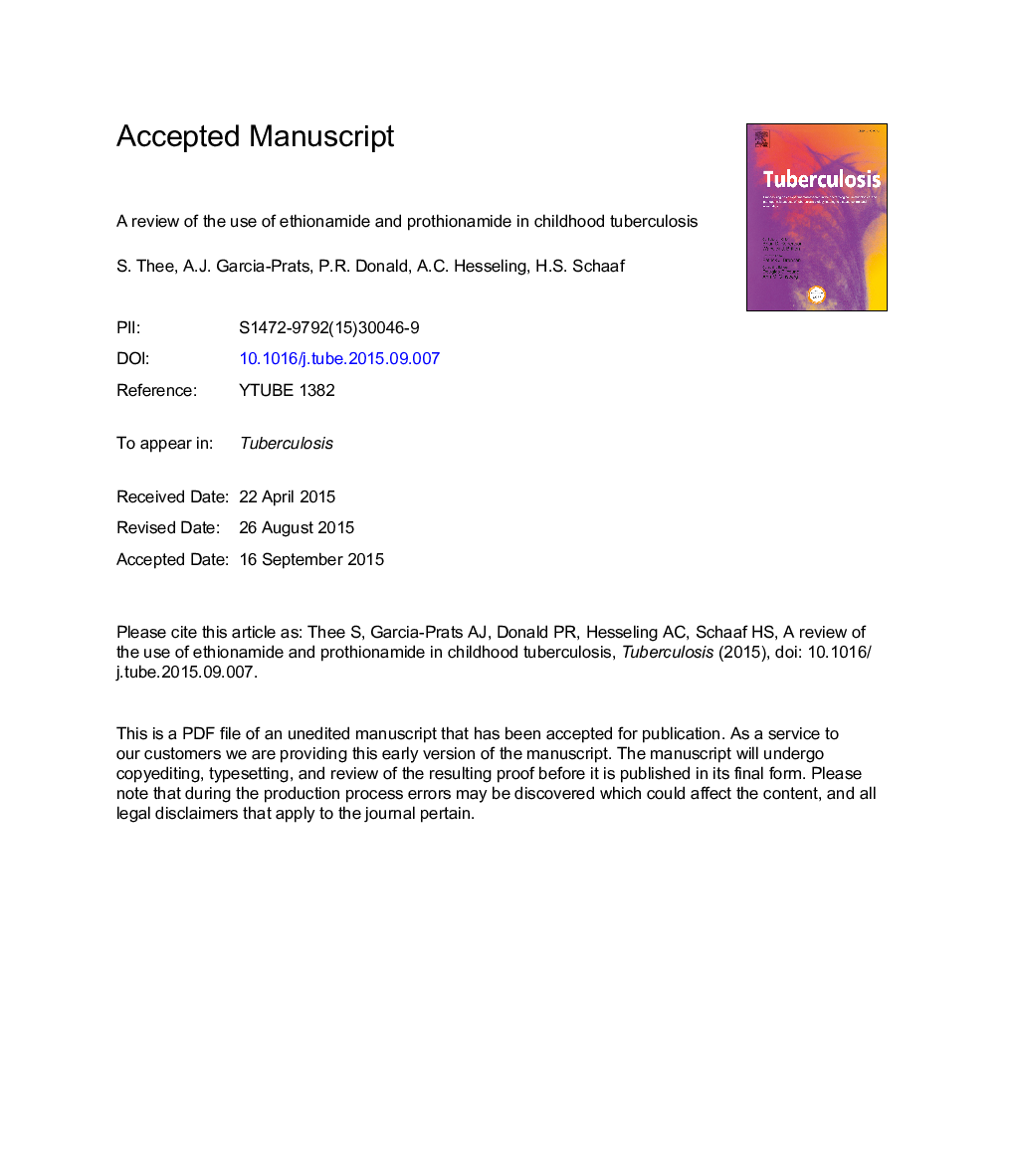| کد مقاله | کد نشریه | سال انتشار | مقاله انگلیسی | نسخه تمام متن |
|---|---|---|---|---|
| 8485306 | 1551710 | 2016 | 36 صفحه PDF | دانلود رایگان |
عنوان انگلیسی مقاله ISI
A review of the use of ethionamide and prothionamide in childhood tuberculosis
ترجمه فارسی عنوان
بررسی استفاده از اتونامید و پروتینامید در سلول های کودکی
دانلود مقاله + سفارش ترجمه
دانلود مقاله ISI انگلیسی
رایگان برای ایرانیان
کلمات کلیدی
موضوعات مرتبط
علوم زیستی و بیوفناوری
ایمنی شناسی و میکروب شناسی
میکروبیولوژی و بیوتکنولوژی کاربردی
چکیده انگلیسی
Ethionamide (ETH) and prothionamide (PTH), both thioamides, have proven efficacy in clinical studies and form important components for multidrug-resistant tuberculosis treatment regimens and for treatment of tuberculous meningitis in adults and children. ETH and PTH are pro-drugs that, following enzymatic activation by mycobacterial EthA inhibit InhA, a target shared with isoniazid (INH), and subsequently inhibit mycolic acid synthesis of Mycobacterium tuberculosis. Co-resistance to INH and ETH is conferred by mutations in the mycobacterial inhA promoter region; mutations in the ethA gene often underlie ETH and PTH monoresistance. An oral daily dose of ETH or PTH of 15-20Â mg/kg with a maximum daily dose of 1000Â mg is recommended in children to achieve adult-equivalent serum concentrations shown to be efficacious in adults, although information on optimal pharmacodynamic targets is still lacking. Gastrointestinal disturbances, and hypothyroidism during long-term therapy, are frequent adverse effects observed in adults and children, but are rarely life-threatening and seldom necessitate cessation of ETH therapy. More thorough investigation of the therapeutic effects and toxicity of ETH and PTH is needed in childhood TB while child-friendly formulations are needed to appropriately dose children.
ناشر
Database: Elsevier - ScienceDirect (ساینس دایرکت)
Journal: Tuberculosis - Volume 97, March 2016, Pages 126-136
Journal: Tuberculosis - Volume 97, March 2016, Pages 126-136
نویسندگان
S. Thee, A.J. Garcia-Prats, P.R. Donald, A.C. Hesseling, H.S. Schaaf,
